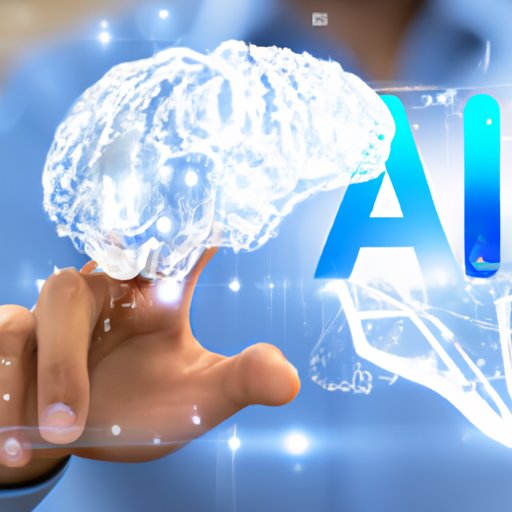Introduction
Artificial Intelligence (AI) and Machine Learning (ML) are two emerging technologies that are transforming the way businesses operate today. AI and ML are used to automate tasks, improve decision-making, and create new products and services. In this article, we will explore the basics of AI and ML, how businesses can leverage them, best practices for implementing AI and ML solutions, and future trends.
Exploring the Basics of Artificial Intelligence and Machine Learning
Before diving into the details of AI and ML, it is important to understand what they are and how they differ. AI is the ability of a computer system or machine to think and learn like a human. It involves creating computer programs that can make decisions and take actions without direct human intervention. ML, on the other hand, is a subset of AI that uses algorithms to learn from data and improve over time. It enables computers to identify patterns, make predictions, and automate tasks.
There are several types of AI and ML technologies, ranging from supervised learning to deep learning. Supervised learning uses labeled datasets to teach machines to recognize patterns, while unsupervised learning uses unlabeled datasets to identify patterns in data. Deep learning is a type of machine learning that uses neural networks to automatically identify patterns and features in data. Other types of AI and ML technologies include natural language processing, computer vision, and reinforcement learning.
The benefits of AI and ML are numerous. They can help businesses increase efficiency, reduce costs, and improve customer experiences. AI and ML can also be used to automate tedious tasks, such as data entry and analysis, freeing up employees to focus on more creative and strategic work. Additionally, AI and ML can provide insights into customer behavior and preferences, helping businesses make better decisions.
How to Leverage AI & ML in Your Business
Now that you have a basic understanding of AI and ML, let’s look at how businesses can leverage them. The first step is to identify opportunities where AI and ML can be applied. This could include automating manual tasks, improving customer service, or analyzing customer data to inform marketing campaigns. Once these opportunities are identified, businesses should develop a strategy for leveraging AI and ML.
When developing an AI and ML strategy, it is important to consider the tools available. There are a wide range of AI and ML tools, such as predictive analytics, computer vision, and natural language processing. These tools can help businesses automate tasks and gain insights from data. Finally, businesses should consider how they can use AI and ML to create competitive advantages.
Best Practices for Implementing AI & ML Solutions
Once businesses have identified opportunities and developed an AI and ML strategy, they need to consider best practices for implementation. One of the most important steps is to build a data-driven culture. This involves encouraging employees to use data to inform decisions, investing in data literacy training, and providing access to data and analytics tools. Additionally, businesses should invest in talent by hiring experienced AI and ML engineers and data scientists.
Another important best practice is to design responsible AI systems. This means ensuring that AI and ML solutions are transparent and ethically sound. Additionally, businesses should consider the potential risks associated with using AI and ML, such as data privacy, bias, and security. Finally, businesses should ensure that AI and ML solutions are tested and monitored regularly.
Trends & Predictions for the Future of AI & ML
The future of AI and ML is bright. As these technologies continue to advance, we can expect to see the emergence of automation and robotics. Automation and robotics are already being used in a variety of industries, from manufacturing to healthcare, and this trend is expected to continue. Additionally, there will be an increased focus on cybersecurity, as AI and ML are increasingly used to detect and prevent cyberattacks.
Finally, the rise of edge computing is likely to accelerate the adoption of AI and ML. Edge computing is the process of bringing computing power closer to the end user, allowing for faster and more efficient processing of data. This has the potential to drastically reduce latency and enable real-time decision making.
Conclusion
In conclusion, AI and ML are powerful technologies that have the potential to transform businesses. They can help businesses automate tasks, improve decision-making, and gain valuable insights from data. When implementing AI and ML solutions, it is important to consider best practices such as building a data-driven culture and designing responsible AI systems. Additionally, businesses should keep an eye on emerging trends, such as automation and robotics, increased focus on cybersecurity, and the rise of edge computing.
(Note: Is this article not meeting your expectations? Do you have knowledge or insights to share? Unlock new opportunities and expand your reach by joining our authors team. Click Registration to join us and share your expertise with our readers.)
